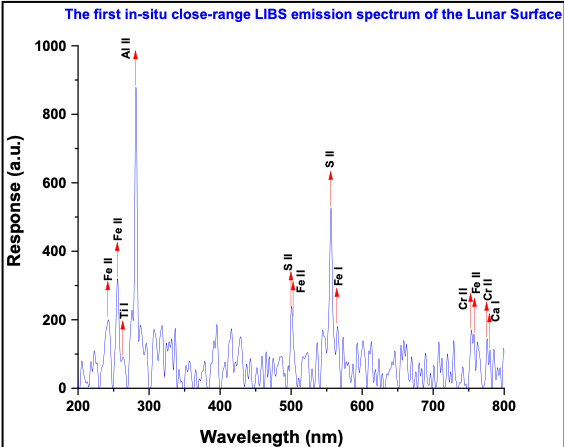
Introduction:
Exploring the uncharted terrains of the Moon has always been a dream of scientists and space enthusiasts alike. The Chandrayaan-3 mission, spearheaded by the Indian Space Research Organisation (ISRO), has been making waves with its groundbreaking in-situ scientific experiments. Among these experiments, the Laser-Induced Breakdown Spectroscope (LIBS) instrument stands out for its role in shedding light on the lunar surface's composition.
Confirming the Presence of Sulphur:
One of the most exciting revelations from the Chandrayaan-3 mission is the unambiguous confirmation of the presence of Sulphur (S) on the lunar surface near the south pole. This discovery marks a significant milestone as it's the first-ever in-situ measurement of Sulphur on the Moon. The LIBS instrument's ability to analyze elements using laser-induced breakdown spectroscopy has allowed scientists to identify and understand the composition of the Moon in unprecedented detail.
Elements Detected:
In addition to Sulphur, the LIBS instrument has successfully detected a range of other elements on the lunar surface, reaffirming the mission's importance in unraveling lunar mysteries. Elements such as Aluminum (Al), Calcium (Ca), Iron (Fe), Chromium (Cr), Titanium (Ti), Manganese (Mn), Silicon (Si), and Oxygen (O) have been identified, aligning with scientists' expectations. These findings not only provide insight into the Moon's geological history but also contribute to our understanding of the solar system's formation.
The Quest for Hydrogen:
As part of its comprehensive analysis, the Chandrayaan-3 mission is also on a quest to detect Hydrogen (H) on the lunar surface. While this search is still underway, the potential discovery of Hydrogen would hold immense significance. Hydrogen is a crucial element that could provide insights into the presence of water ice or other volatile compounds on the Moon. Such discoveries could have profound implications for future lunar exploration and potential resource utilization.
The Ingenious LIBS Instrument:
The success of the LIBS instrument in uncovering these vital insights is a testament to the ingenuity of the scientists and engineers at the Laboratory for Electro-Optics Systems (LEOS) within ISRO, located in Bengaluru. The LIBS instrument's technology, based on laser-induced breakdown spectroscopy, allows for non-destructive elemental analysis. This cutting-edge technology has opened new avenues for exploring celestial bodies and understanding their composition.
Conclusion:
The Chandrayaan-3 mission's in-situ scientific experiments, particularly the accomplishments of the LIBS instrument, have pushed the boundaries of lunar exploration. The confirmation of Sulphur and the detection of various other elements on the lunar surface provide a richer understanding of our closest celestial neighbor. As the search for Hydrogen continues, the mission holds the promise of unraveling more lunar mysteries that could reshape our perception of the Moon's history and potential. The collaborative efforts of ISRO's scientists and engineers in developing the LIBS instrument underscore the importance of innovation in space exploration, inspiring future generations to delve deeper into the cosmos.